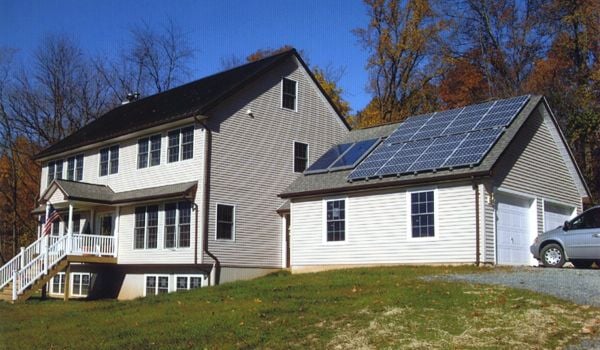For years, Louisiana was the only state in the country to have a master plan for dealing with coastal land loss. Now other states, like Texas, are following suit. Louisiana´s motivation is clear: The state loses approximately a football-field’s worth of land every hour. Louisiana´s Coastal Protection and Restoration Authority estimates that, left unattended, the loss of the state’s wetlands will worsen the annual cost of flood damage from an average of $2.7 billion to approximately $19.9 billion. Yet in the face of such dire predictions, some see an opportunity for southern Louisiana to position itself as a leader in water management and to reap the economic benefits of not only addressing the state´s issues, but of selling that expertise to others.
This is the conclusion that economist Robert Habans of The Data Center reached in his study released earlier this month. Hagans found that in the aftermath of 2005´s Hurricane Katrina and the 2010 BP oil spill, the heavy construction industry grew, as firms rebuilt the city’s broken levees and constructed massive flood protection systems. However, other industries associated with heavy construction have not necessarily fared as well. For example, engineering jobs didn’t increase at the same rate.
Habans tells Next City that while southern Louisiana has done well in terms of bringing in construction jobs, it lags in the number of engineering positions. “If we had more of the design work, that’s what we would see,” Habans tells Next City, explaining that in order to bring in technical positions, such as engineering, the area needs the capacity to envision projects and how to execute them.
Still, Habans cautioned that because water management is “an emerging sector,” there isn’t good data yet on on the employment trends in this field. At the same time,the report suggests that improving connections between specialized fields in the region, such as heavy construction and civil engineering, “will be crucial to the cluster’s long-term development.”
Yet jobs like engineering are only accessible to those with substantial formal education. The Associated Press reported that currently fewer than half of Louisiana’s adults between 25 and 65 have a credential beyond their high school diploma. The Louisiana Budget Project reports that tuition at state four-year colleges increased more than 100% between 2008 and 2018, an increase of nearly $5000 per student. According to a new report from the Center on Budget and Policy Priorities, such cuts worsen inequality. In an effort to reveese this trend, Louisiana’s Board of Regents has asked the state to allocate $156 million toward refunding the state’s university system.
New Orleans has a number of businesses focused on water management. While some focus on designing better municipal and regional systems to ensure the city can survive heavier rainfalls and storm surges, others focus on neighborhood-level infrastructure to make communities more resilient.
Aron Chang, a professor with Tulane University’s School of Architecture, cautions that while southern Louisiana has the potential to export know-how related to water management, the region currently lags behind Philadelphia and Seattle. Those cities, he says, began addressing water issues roughly 10 years ago.
“I think there is a search continually in this region to look for the growth of different sectors that are especially promising. So, post-Katrina, there was a lot about tech and ‘Silicon Bayou,’” Chang says. But he says, all the focus on tech hasn’t led to many people of color and native New Orleanians filling these jobs. Hagans noted that in heavy construction and engineering jobs, both women and African-Americans are underrepresented. For Chang, this reflects structural issues that won’t be solved simply by embracing the latest hot industry.
There are “ongoing issues with a problematic education system and our ability to connect, to create real pipelines” to those jobs, Chang tells Next City.
While a number of small businesses have sprung up in New Orleans to focus on designing and building green infrastructure, one challenge they face is having to bid for contracts against large, established firms.
Mary Kincaid, the Sustainable Infrastructure Program Manager with the City of New Orleans, explained that one way the city is trying to level the playing field is by “debundling.”
“Debundling is where we take a 20-million-dollar project and we turn it into four projects that are either right around 5 million [dollars] or less than 5 million,” Kincaid says. “So, a new small business operator doesn’t necessarily have to go through relationships with large general contractors. They can bid directly.” Kincaid tells Next City that by breaking projects into smaller pieces, large companies may choose not to participate, which also means small businesses have a greater chance to win the contracts. The Gentilly Resilience District, which will run until 2022, is one large-scale project where the city of New Orleans has adopted the debundling strategy. The Department of Housing and Urban Development awarded more than $141 million to New Orleans in 2016 for disaster resilience efforts focused on the Gentilly neighborhood.
Kincaid also says the city is working to ensure that businesses owned by women and people of color have opportunities to get training.
“HUD set aside three million dollars for workforce development as part of this grant,” Kincaid tells Next City. New Orleans requires that 35 percent of the contracts it assigns must go to “Disadvantaged Business Enterprises,” firms that are majority owned by a ‘socially and economically disadvantaged person’ or people.
To meet this goal, Kincaid says that the city is taking a proactive approach to contracting with smaller businesses by collaborating with the Black Chamber of Commerce and Dillard University, a historically black college, to let companies know about the opportunities the city is offering.
One challenge facing companies, though, says Todd Reynolds, executive director of the community development nonprofit Groundwork NOLA, is that the city doesn’t fully understand how green infrastructure works and how to maintain it. As a result, he says, the city is reluctant to contract for these services.
“[City maintenance workers] jump out of the truck with the weed whacker, zip, zip, zip, zip, zip. That job is done. Meantime, you’ve cut down the irises and other plants that retain water and haven’t really done any weeding,” Reynolds says.
A spokesperson for the City of New Orleans said that it is preparing a proposal for a HUD-funded training program that will cover green infrastructure and maintenance and that the city has ongoing green-infrastructure training.
Meanwhile, Groundwork is training young people to design, install and maintain green infrastructure; it then contracts with individuals and organizations to do this work, which allows Groundwork to employ graduates of its training programs.
Groundwork’s Green Team recruits approximately a dozen high school students between the ages of 14 and 18 for fall, spring and summer sessions. At the end of a session, the organization provides the funds for youth to build a project to mitigate storm-water effects that they design for their neighborhood. Examples of projects can be a rain garden, a bioswale, or a drainage system, such as a French drain, that captures and filters water before it can enter the urban sewer system.
Separately, Groundwork’s Ground CREW (Creating a Resilient Environmental Workforce) program offers employment to young adults between ages 19 and 25 working on maintaining green infrastructure, whether in city parks or in individual yards. Reynolds agrees with Chang, the professor, that changes need to be made to ensure that local youth get connected with good jobs.
A 2016 report from Tulane University’s Cowen Institute, which focuses on education, found that there were more than 6,800 New Orleans residents between the ages of 16 and 24 who were not in school or employed. This ranked as the third highest figure for any U.S. metro area.
Kayla “KB” Butler, 15, spent the summer in the Groundwork program and has returned for the fall session. Butler says learning about green infrastructure has helped her to better understand how construction choices affect her neighborhood.
“I learned about bioswales and how they are like a bigger rain garden, and it like puts all the rain water back into the earth and the water table,” she tells Next City. “Now I know different things that we can do to help better the environment. It can be like little things, but it still adds up over time,” Butler says.
While Groundwork and others are working to train New Orleanians for green infrastructure jobs, Chang says that tested employment options shouldn’t be given short shrift. He pointed to the city’s Sewerage and Water Board, as an example, which he says is the largest employer of middle-class jobs in the city.
“I don’t want green infrastructure to be this red herring,” Chang says, explaining that a trendy field doesn’t necessarily equate to family-sustaining jobs. He also stresses that developing a workforce qualified for skilled work takes more than an eight-week certification process. “We should really be focused on building strong foundations for our science education and design education. All those things [should be] made available to elementary school, middle school and college students so we are truly building a sustainable pipeline towards middle-class and upper-class jobs for all students,” Chang tells Next City.

Zoe Sullivan is a multimedia journalist and visual artist with experience on the U.S. Gulf Coast, Argentina, Brazil, and Kenya. Her radio work has appeared on outlets such as BBC, Marketplace, Radio France International, Free Speech Radio News and DW. Her writing has appeared on outlets such as The Guardian, Al Jazeera America and The Crisis.
Follow Zoe .(JavaScript must be enabled to view this email address)
















